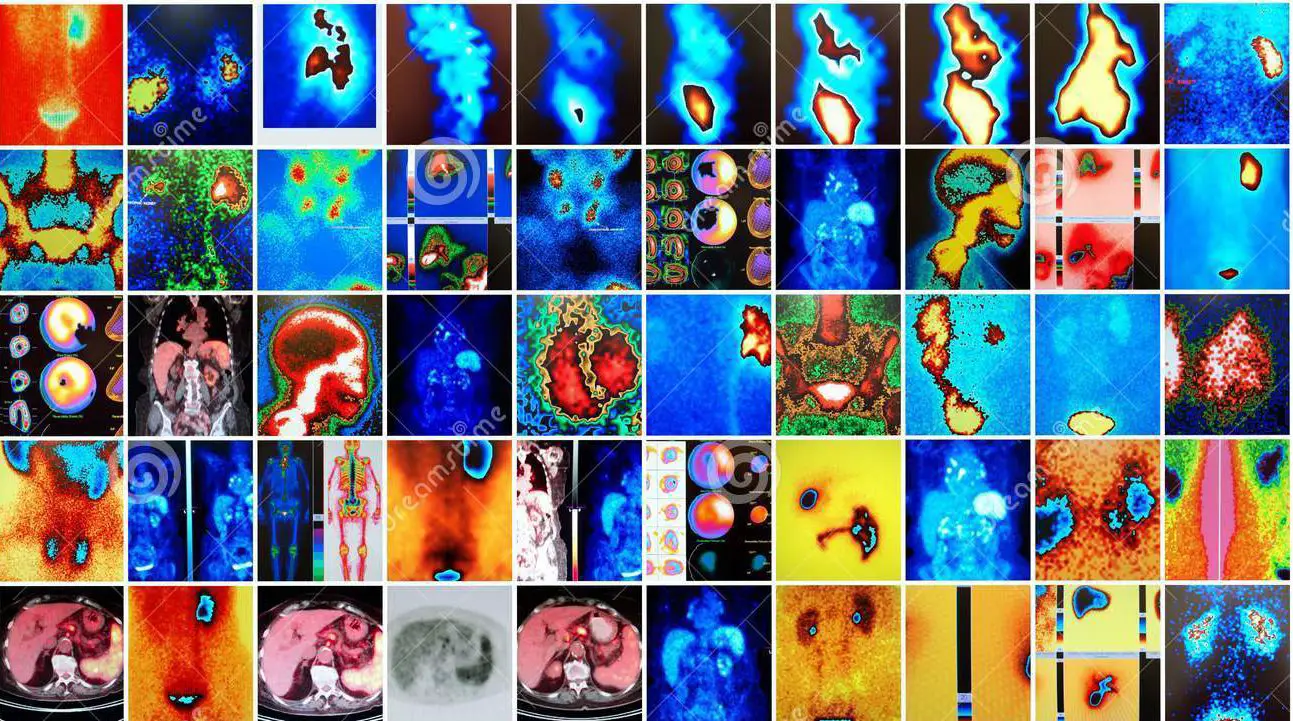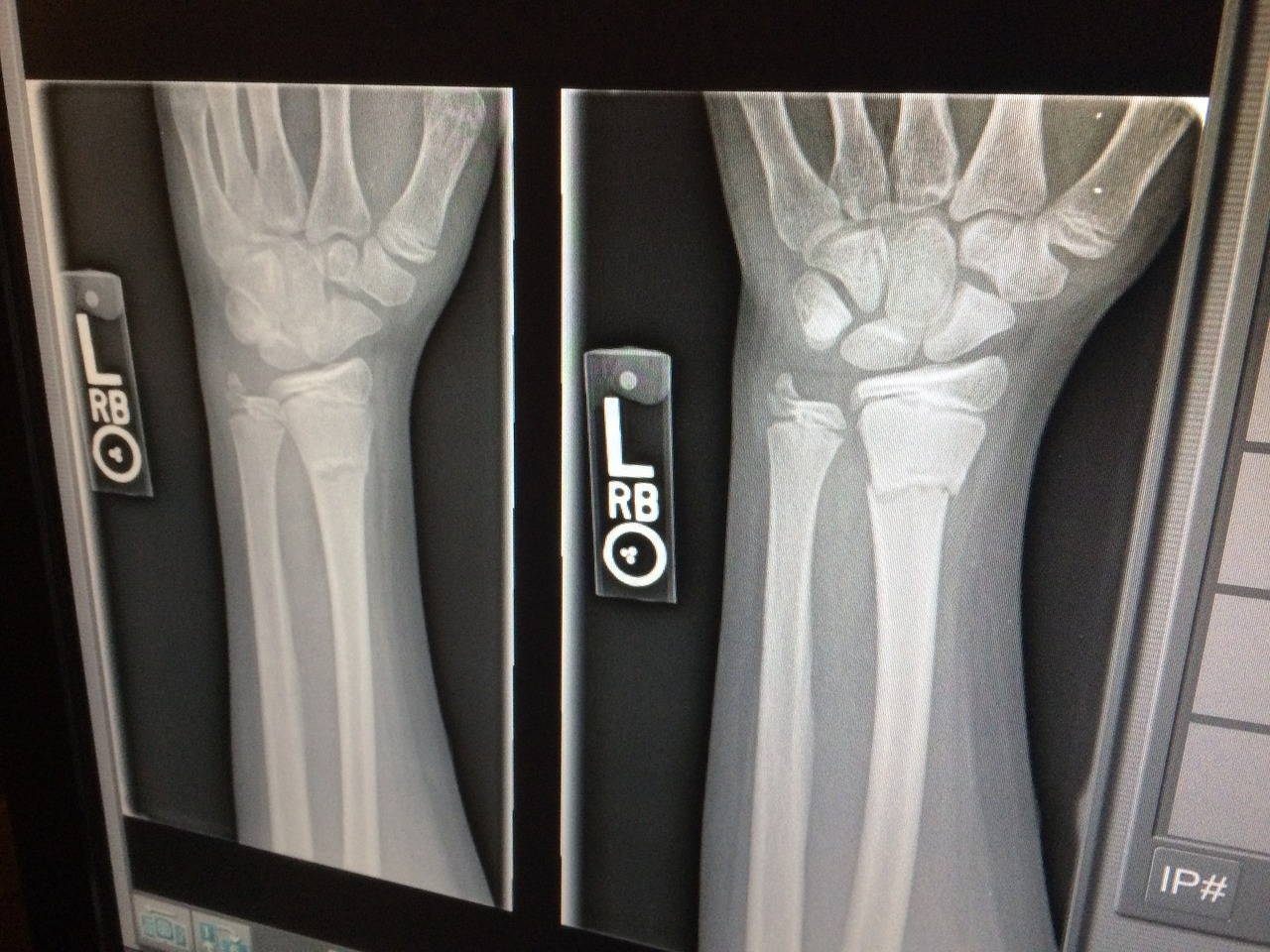
It may be your first day, your first month, or maybe you started residency several months ago. Perhaps, you want to make that great first impression on your program director. Or, maybe things are not going as well as you might have liked during your first year. Having worked with numerous first-year residents rotating in our residency and having completed a full four years of residency, I have learned the ingredients you need to become a great first-year resident. As a former resident, I wish I had a list of tips on how to start my radiology resident experience on the best footing possible.
Well, now it’s here. I have a list of 12 ways to improve your radiology residency experience starting in the first year of your diagnostic radiology residency program. Also, I will give you examples of what not to do (these scenarios are real!). Then, I will explain how to make the best of each piece of advice. To all- ENJOY AND HEED THIS ADVICE!!!
Be Enthusiastic
On your first day of radiology residency, you walk into the reading room for the first time, and you are nervous and hesitant. You begin to yawn, mouth wide open. An attending sits in the corner about to read films. You slink back and worm your way into a corner. You don’t introduce yourself for fear of disturbing the attending radiologist. Instead, you start talking to your resident colleagues. Is that a way to start your career? By all means, NO!!!!
My words of advice:
Always make sure to put on your best face forward toward your staff. What does that mean? Well, it’s pretty much common sense. Always introduce yourself. Always ask how you can help. And, always volunteer to participate in a readout or procedure. You have only one chance to learn the things you need to know before practicing as an attending, and that way is RADIOLOGY RESIDENCY. Make it the best learning experience you can, and that involves going that extra mile to show your enthusiasm/interest.
Be On-Time
You wander into the reading room, and it’s 10 AM. When you see your attending radiologist reading out films, he pauses for a moment. You decide to say, “When can we start reading out together?” The attending looks at you with a confused quizzical face. Was I supposed to have a resident today?
My words of advice:
When you arrive in the morning, always let your attending know that you are today’s resident. If you have to step out for a few moments, let him know that you need to leave. It is a sign of respect to let your attending see that you are going to be around to help out, learn, dictate, and ask questions. It will go a long way to establishing a rapport between yourself and your residency staff!
Be Nice to Everyone
It’s your first day, and you walk into the residency coordinator’s office. You sit in her chair, never having seen or met her. And then, you start playing games on her computer. The coordinator walks into the office and stares at you and is thinking: who the heck is this guy?
My words of advice:
Make sure when you are beginning that you are kind to everyone!!! I don’t care if it is the residency coordinator, janitor, technologist, attending, senior resident, or nurse. We are all part of the same team. Moreover, we always hear about our resident’s behavior, good or bad. As residency director, we receive 360-degree evaluations, reviews of the residents from potentially all these sources, and more. I can tell you that if you want to destroy your reputation as a resident, the worst thing you can do is misbehave with your team members, especially the residency coordinator!!!!
Dress Appropriately
You are upstairs on the floors in a t-shirt and ripped jeans. Your ID badge sits in your back pocket with the list of patients to consent. In your morning haze, you stumble up to the door of the 3rd patient with informed consent in hand. You introduce yourself to the patient, and she gives you that look- who are you really, and what are you doing here? You go through your pat explanation of the procedure, the risks, and the alternatives. The patient warily signs the consent form. Great! The last consent of the morning.
Later that afternoon, the program director calls you into the office. It turns out, the patient was the wife of a hospital executive and called the emergency hotline. The program director now has two complaints about this resident, one from the patient’s husband and another from the doctor in the hallway. Both are furious because they did not know who you were and felt uncomfortable confronting you. The program director states, “Go home and change immediately!”
My words of advice:
Always make sure you look and play the part of a physician. Some patients and physicians are easily offended by an inappropriate appearance/uniform. In our world, radiology is a service-oriented profession. Furthermore, appearances fortunately or unfortunately lend credence to your skills, personality, and the department. Please make sure to represent your department in the best light!
Play the Role of An Attending From Day One- Take Responsibility for Your Patients and Department
You roll on into the nuclear medicine department and arrive at the department early. Briefly, you look at the list of patients in the computer. A bone scan and a gallium scan lies waiting as unread. You think to yourself, I know those topics well. I also know it would be much more productive to read a nuclear medicine book on a new subject. As you are waiting for your attending to arrive, you pull out your text and learn about nuclear medicine. The attending walks through the door a few minutes after you started to read and says, “Have you looked at the cases from last night?” You reply, “I was hoping to get my reading done for the day. Didn’t get a chance to look at the cases.”
My words of advice:
When you are on any service, good learners become great radiologists by reading lots of cases. You may know a given topic well, but you can only learn normal from abnormal by reading thousands of cases in different contexts. Unfortunately, you cannot learn this from merely reading a book. The only way to get that experience is to look at lots of cases every day. Take an active role as if you are an “attending.” Radiology is not a spectator sport!
Be Knowledgeable
You are in the second week of your first CT rotation. So, you sit down with the CT attending to go over the day’s work. The attending goes through each of the cases slowly. Finally, she happens upon an abdominal CT scan. You stare at the images, and she asks you about an ovoid cystic density structure just inferior to the liver. You blurt out, oh, that’s easy. It’s an aorta!!! Your attending begins to shake her head slowly and becomes silent. She doesn’t say much for the rest of the day.
My words of advice:
There’s an old radiology adage. The difference between a bad, OK, good, and great radiology resident is the amount you read every night. A bad resident doesn’t read. An OK resident reads 1 hour a night. A good resident reads 2 hours a night. And, a great radiology resident reads 3 hours a night. Don’t be that bad radiology resident! When you start, I encourage you to read a lot, especially emphasizing the basics and anatomy!
Read a Lot, but Make Sure to Study the Images
It is your first day on the new chest film rotation. You have just finished reading an entire textbook on chest radiology. As you start looking at the cases with your attending, you figure that you will try to impress him with your in-depth knowledge of the findings associated with sarcoidosis. So, you start going through a small presentation about your newfound knowledge based on the textual information. After your serenade, he begins to look at the first few cases of the day. Then, he pauses as he starts on the third case of the day.
He asks, “What do you think about this chest film in front of you?” You stay silent as you search the film up and down, left and right. Nothing seems to register as abnormal ton the film. Your attending points out a significant opacity obliterating the vessels behind the heart and obscuring the left hemidiaphragm. He then asks, “Where is the opacity located?” You realize that you have read tons of information on pneumonia but never looked at the pictures. Uh oh! You cannot identify the location based on a mental reference point. Your heart sinks as you realize you have more reading to do…
My words of advice:
Reading a radiology text differs dramatically from reading an internal medicine book, a novel, or other sorts of written information. The most important features of a radiology textbook are usually the pictures and captions below the pictures. So, it behooves the resident to concentrate on these films, often more than the text itself. Of course, you need to understand and remember the disease entities, but radiology is most often about the images!
If a Radiology Attending Asks You a Question, Always Look Up the Answer
So, it’s the end of the day, and you are sitting with your favorite attending. For the few days that you have worked with her, she has a habit of teaching interesting topics while taking cases. It feels like you just read an entire book without even touching a page. She enthusiastically asks you a question about a patient with breast cancer. She says, “I wonder what a sclerotic metastasis would look like on a PET-FDG scan? Maybe you can look it up, and we will go over it tomorrow.”
You go home exhausted and fall asleep slumped over your computer, without even getting a chance to read a word about the topic. You get up in the morning and realize you are running late. Hurriedly, you grab your stuff and arrive barely on time. Sweating profusely, you run into the reading room. Your attending almost sits down at her workstation. And she says, “Did you look that topic up for me?” Unfortunately, you don’t have a satisfactory answer. For the rest of the day and weeks afterward, she barely spends time on her cases with you. You’ve lost many opportunities to learn with your mentor.
My words of advice:
You sow what you reap! When someone, specifically a radiology attending, takes the time out of the day to teach. And, she goes over cases with you out of his/her own free will, it is essential to pay back that person with attention, diligence, and care. By under-appreciating the attending’s time, you change the willingness of a teacher to teach. Remember, most hospitals do not pay radiologists stipends for their time with their residents. Teaching emanates from the goodwill of the staff!
Always get a good history
It is late in the day, and you are about to read the last hepatobiliary scan of the day. But you have to do it quickly because you need to get home to your family. Instead of entering into the electronic health records, you promptly peruse the one-word order on the top of the dictation page. It says pain. So you start reading and dictating the case promptly for the attending with that one-word history. In a few minutes, you finish the dictation.
You walk back to the reading room and begin to go over the case with your attending. Subsequently, he opens the case, looks at your history/dictation, and begins to look at it as the surgical team walks by to get the radiologist’s interpretation. The surgeon asks, “What do you think?” The radiologist says, “With a history of pain, it looks like the gallbladder fills nicely without findings suggesting cholecystitis.” The surgeon responds curtly, “We just took out the gallbladder!!”
My words of advice:
Always take the time to get a great history. As a resident, you should take the time to gather all the information. Without a good history, trust me, you will get burned. So, avoid the inevitable, take your time, and always get all the necessary information!!!
Establish a search pattern for all modalities
The day’s attending sends you out of the room to read a new CT scan of the abdomen. The patient has right lower quadrant pain, and the emergency doctor wants you to rule out appendicitis. So you look through the CT scan quickly and ramble into the Dictaphone about the case. Your eyes move here and there without any specific pattern. Finally, you see some terminal ileum wall thickening and put in your impression- findings suspicious for terminal ileitis/inflammatory bowel disease. Happily, you trot back to your radiology attending to go over the case. Within 10 seconds, your attending says, “You missed the 4 mm obstructive stone in the right ureter!”
My words of advice:
Believe it or not, almost every experienced radiologist has a rigorous search pattern and mental checklist in every case. With this checklist, they don’t miss any findings that may be relevant to patient care. You might not know they have a search pattern/checklist because they have been doing it for so long. And, they rapidly read the cases. But, I can guarantee you will miss plenty of significant findings if you do not go through an organized approach to looking at a film. It happens all the time!!!
Always check for priors
The radiology attending just left the service for the day. You are now on call for the night. The emergency department continues to call the nuclear medicine department every 10 minutes to get the result. Annoying, isn’t it? It is time to give a STAT interpretation of a pulmonary V/Q scan. So, you look at the scan and the associated chest film. And, you see three large mismatches without corresponding findings on the chest film. You call the ER and tell them the scan is positive for pulmonary embolus. You feel good because you think you made the right call for sure.
The next morning at the readout, your attending starts to look at the case. He notices that you didn’t compare to the prior scan. It seems the same. His interpretation- no findings to suggest new pulmonary embolus. He says, “Call the ER right now to make sure the patient doesn’t get more anticoagulants.” You feel like an idiot for missing the correct diagnosis!
My words of advice:
I can’t emphasize enough how important it is to compare priors. Priors will bail you out many times. And, comparing with them makes the difference between shoddy and outstanding patient care. If you want to become a resident star, always make a concerted effort to check for prior studies!
Learn about things that can kill a patient or are common first. Zebras can usually stay at the zoo!
You are taking your first independent call and start to look at your first ultrasound of the evening. It is a 2-year-old pediatric patient with right lower quadrant pain. Looking through the ultrasound images, you see a target like structure in the right upper quadrant. You recently read a large text and saw a case of Henoch Schonlein Purpura affecting the bowel. It happened to look just like it. Your differential reads Bowel thickening from Henoch Schonlein Purpura before anything else. Ten minutes later, the pediatric surgery team trots up the stairs toward your workstation and says, “What are you talking about? We were looking for a large bowel intussusception!”
My words of advice:
Stick to the most common two or three items within the differential diagnosis. You will often be right more than not. As I said, zebras can usually stay at the zoo!!
Making A Good Impression
I’m sure almost all of you want to make your best impression on the staff that you are going to work with for four years. One or two mistakes toward the beginning of your stay can make your life very difficult for the rest of your radiology training. Unfortunately, it is effortless to leave the wrong impression on the staff, but it is harder to correct. To avoid these blunders, I highly recommend you follow these rules. Don’t be the brunt of your residency’s jokes!





































